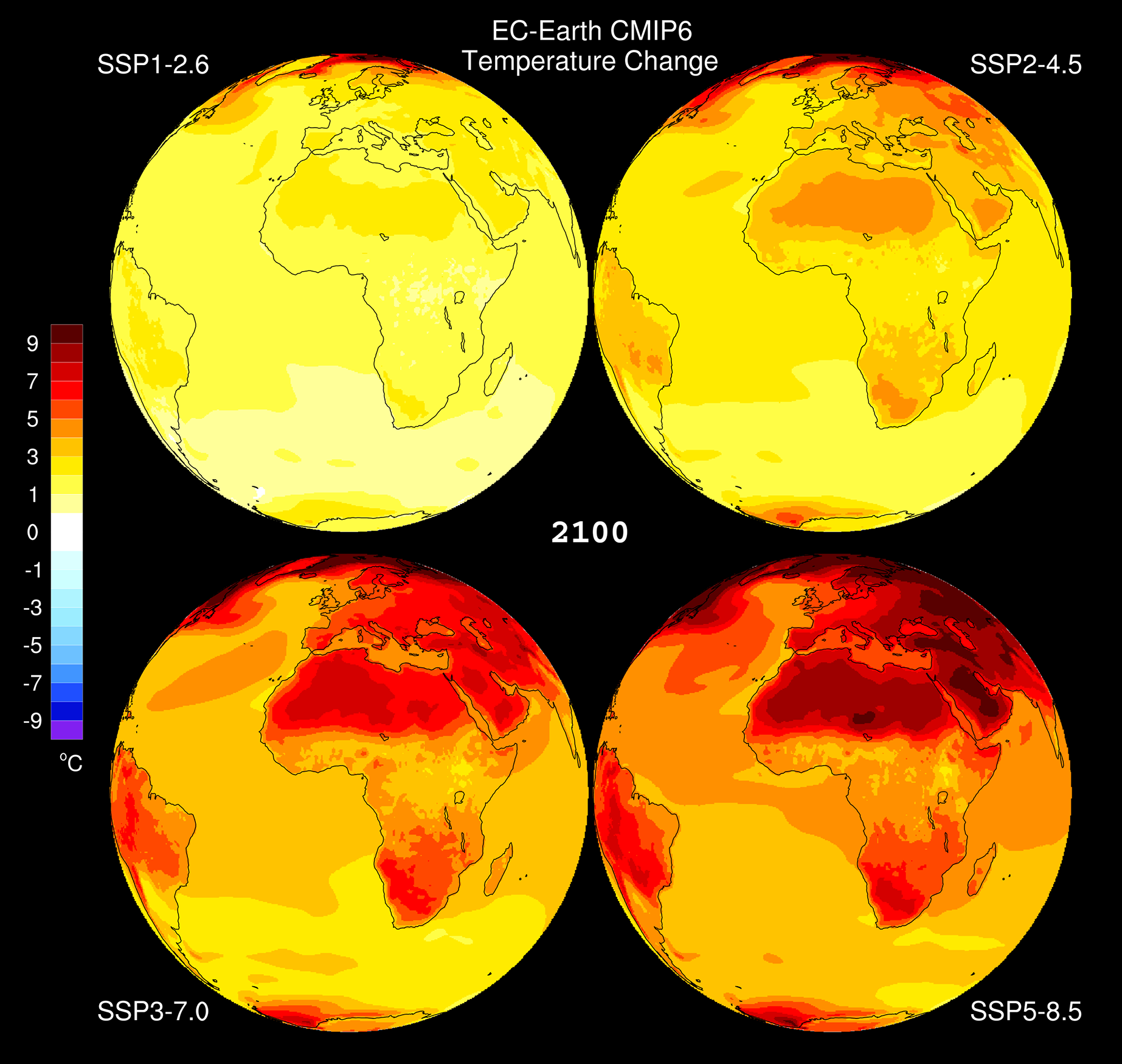
Project Start Date
02nd Aug 2017
Project End Date
01st Apr 2019
EC-Earth Climate Simulations - Ireland’s Contributions to CMIP6
This EPA-funded project involves using the ‘EC-Earth’ Global Climate Model to simulate global climate change.

Overview
CMIP6 EC-Earth Global Climate Projections
Global Climate Models (GCMs) provide projections of future climate conditions based on different atmospheric greenhouse gas concentrations or, more broadly, different levels of radiative forcing of the climate system. Climate models are some of the most complex models in all of science and require powerful HPC systems in order to run multi-decadal simulations. One such model is the EC-Earth global climate model. EC-Earth is developed by a European Consortium of which ICHEC and Met Eireann are members. Researchers at ICHEC, through an EPA-funded project (and in collaboration with Met Éireann), completed a large ensemble of CMIP6 EC-Earth simulations on the ICHEC national high performance computer and European supercomputing systems. These simulations provide sharper and more accurate projections of the future global climate and will lead to a better understanding, not only of the physical climate system, but also of the climate impact on societies.
The EC-Earth Atmosphere–Ocean General Circulation Model (AOGCM) configuration was employed. The atmosphere was simulated with ~79-km horizontal grid spacings (T255) and 91 vertical levels. The ocean was simulated with 1-degree horizontal resolution and 75 vertical levels. In total, five historical (1850–2014) and 20 Scenario Model Intercomparison Project (ScenarioMIP) simulations (2015–2100) were run.
The future climate was simulated under the full range of ScenarioMIP “tier 1” shared socioeconomic pathways (SSPs); SSP1–2.6, SSP2–4.5, SSP3–7.0 and SSP5–8.5. For one ensemble member, all model levels were archived, allowing for regional downscaling using regional climate models and participation in the CMIP6 Coordinated Regional Downscaling Experiment (CORDEX) Model Intercomparison Project (MIP).
The project team completed the following EC-Earth CMIP6 contributions:
- 5 x T255-ORCA1L75 AOGCM CMIP6 Historical Simulations, 1850-2014
- 20 x T255-ORCA1L75 AOGCM CMIP6 (5 x SSP1-2.6, SSP2-4.5, SSP3-7.0 & SSP5-8.5), 2015-2100
The simulations comprise Ireland’s contribution to the Coupled Model Intercomparison Project (phase 6) (CMIP6) and will be included for assessment in the United Nations Intergovernmental Panel on Climate Change (IPCC) Sixth Assessment (AR6) reports.
The project final report was published in April 2020 and can be found here.
A high quality version of the report with improved image quality can be found here.
CMIP6 EC-EARTH climate projection data. The above visualization shows annual 2m temperature (℃) change with respect to the mean of the baseline period, 1981-2010. In total, five historical (1850-2014) and twenty ScenarioMIP simulations (2015-2100) were run. The future climate was simulated under the full range of ScenarioMIP “tier 1” Shared Socioeconomic Pathways (SSPs); SSP1-2.6, SSP2-4.5, SSP3-7.0 & SSP5-8.5. Each panel of the visualization presents the mean of five EC-Earth ensemble members.
The visualization shows annual September sea ice fraction. The green line shows the 50% contour line. Each panel of the visualization presents the mean of five EC-Earth SSP ensemble members. Because of the high heat capacity of water, the SST lags behind atmospheric temperatures. Hence, the Arctic sea ice is at a minimum during September.
Data Access & Current Research
All CMIP6 EC-Earth data were published on the Irish Centre for High-End Computing (ICHEC) Earth System Grid Federation (ESGF) node. ESGF is an international collaboration between climate centres with a mission to support CMIP6 and future IPCC assessments. The data produced as part of the current report will be analysed by the international research community for inclusion in the upcoming IPCC AR6 reports. In addition, the EC-Earth simulation data will be used as a basis for more focused regional climate impact studies, such as national downscaling projects and the international CORDEX research community.
Currently, the project team is running additional EC-Earth CMIP6 simulations using an improved version of EC-Earth which includes a vegetation/climate feedback component. These simulations comprise:
- 2 x T255L91-ORCA1L75 EC-Earth-Veg Historical Simulations, 1850-2014
- 8 x ScenarioMIP simulations 2015-2100; 2 x T255L91-ORCA1L75 EC-Earth-Veg for all four ScenarioMIP “tier 1” SSPs (SSP1-2.6, SSP2-4.5, SSP3-7.0 & SSP5-8.5)
These EC-Earth-Veg simulations will be complete during spring 2020 and will be hosted and shared on the ESGF node.






